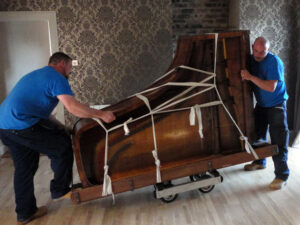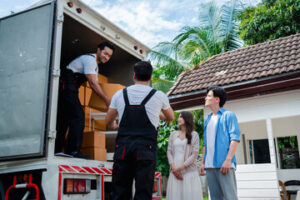In countries with centralized tax administration, the central government controls all taxes and their collection. This provides a minimum of administrative complications and ensures that tax policies aimed at macroeconomic stabilization are implemented as intended.

But in some countries, revenue is shared downward, and some taxes are assigned to subnational governments. This creates new challenges for tax administration. Read on J. Gregory PEO for more details.
A taxpayer identification number is a nine-digit numeric code that the IRS and other agencies use to identify individuals, businesses and other entities. A TIN is often used in conjunction with other identifiers, such as an individual’s Social Security number or a corporation’s Employer Identification Number.
Taxpayer ID numbers are usually kept confidential, so it’s important to keep a TIN card in a safe place and protect statements or documents that contain the TIN number. If someone steals your TIN number, he or she could file fraudulent returns and claim your refund money.
Some countries have centralized tax administrations, while others allow lower levels of government to administer their own taxes based on national laws. In this case, the higher level of tax administration sets general rules for tax bases and rates. Lower levels of government can “piggyback” on the higher level’s base and rate structure, or they may set their own rates for some types of taxes, such as property tax.
In other countries, higher and lower levels of government share tax policy and administration powers over the same tax bases. This arrangement maximizes state or local autonomy. The States, Switzerland and Brazil are examples of this type of tax administration.
The OECD’s latest Tax Administration series provides internationally comparative data on key aspects of tax systems and their administration in 58 advanced and emerging economies. This eleventh edition is aimed at tax administrators, policy makers and other interested stakeholders.
The report’s chapters examine the choices of tax administration for a range of taxes commonly used in lower level governments, including property taxes, business license fees and user charges, surcharges on income taxes, excises, value-added tax (VAT) and retail sales taxes. It also explores the ways in which these taxes are administered and the challenges faced in ensuring that they meet revenue targets. The report also examines the performance of tax administrations and looks at innovative approaches such as public-private partnerships to improve efficiency.
Taxpayer Compliance
Whether a country is unitary or federated, the tax administration choice will impact taxpayer compliance. A centralized model allows for central control of all taxes, but may not be the most efficient from the point of view of lower level governments that levy and collect local taxes. When lower levels of government have legislative control over bases and rates at the margin, this creates a great deal of complexity, which can make it difficult for taxpayers to understand and meet their obligations.
Generally, the best solution is to have all levels of government levy and collect taxes at the same time, and to coordinate their administrative processes with each other. A uniform approach makes it easier for taxpayers to meet their obligations, and for tax administrations to detect noncompliance.
It is also helpful to establish clear lines of authority among levels of taxation, so that staff in each location knows they must follow the rules set by the headquarters. This can simplify the computer system used to monitor collection, allowing for consolidated data on different types of taxes and an easy comparison of the results of each.
Another way to improve tax administration is to strengthen enforcement efforts. This can be done by requiring lower levels of government to enforce taxes, imposing fines for noncompliance, and publicly naming violators. It is important to keep in mind, however, that if a public perception exists that the government in general or the tax system in particular is corrupt or unfair, no amount of publicity is likely to change this perception.
A final way to enhance tax administration is to encourage a culture of integrity and ethical behavior throughout the organization. This can be done by providing training on good governance and ethics to tax officials, creating an internal investigations department for the purpose of detecting unethical practices within the tax administration, and publicizing the names of violators of the law.
The eleventh edition of the OECD’s Tax Administration Series is now available and explores a wide range of tax administration issues in detail. It includes a comprehensive overview of the current state of tax administration worldwide, including the latest developments and best practice. In addition, the book provides a tool kit for tax administrations seeking to transform their operations using information and communication technology.
Tax Audits
In a tax audit, the IRS will examine records to determine how much a taxpayer owes in taxes. These records can include receipts, bills, canceled checks, legal papers like divorce settlements or property acquisitions, loan agreements, tickets, medical or dental records, theft or loss documents and employment documents. The IRS agent doing the audit will tell you exactly what items and documentation they need to complete their examination. A failure to supply the proper records can result in fines, penalties and interest added to the amount of tax owed.
A centralized tax administration system allows tax inspectors to gather information about the various taxes a taxpayer is liable for from one central database or master file. This simplifies the process of identifying stop-filers, as well as reducing the time needed for audits and enforcement. Using this approach also makes it easier to coordinate the activities of state and federal tax agencies.
The drawbacks to a centralized tax administration system include less flexibility in organizational structure and personnel practices and the risk that local officials may be unable to staff all functions of tax administration effectively. However, these disadvantages can be balanced by the advantages of ensuring that all taxpayers receive uniform treatment in assessment, audit, penalties and appeals.
Another option is for a national government to assign specific tax collection tasks to lower levels of the nation’s government, including some or all types of income, excise, sales and value-added taxes. This approach may work better in some countries than a centralized model because it provides a direct link between local decisions to raise taxes and make expenditures.
When the audit is completed, the taxpayer will be informed of the results and any changes made. If a taxpayer disagrees with the outcome of the audit, he or she can dispute the proposed amounts by filing a protest letter within 30 days. The IRS Appeals Office will review the protest and make a decision. If that decision is not favorable to the taxpayer, he or she can take the issue to a U.S. tax court or federal district court.
Tax Collection
Many countries have different tax administration systems. In some, tax administration is a central function of government; in others, it is decentralized to lower levels of government. This choice affects the kinds of tasks that can be undertaken by tax collectors. For example, in a country with a single-level system of collection and administration, it may be possible for all tax offices to share information and to coordinate activities, such as training. This arrangement maximizes efficiency.
In contrast, when taxes are assigned to subnational governments, it can be harder for all tax administrators to coordinate their activities. For example, collecting property taxes requires a database of records and valuations that is likely to be quite different from the information needed for other taxes, such as income taxes or the value added tax (VAT).
One way to minimize problems with this approach is to have clear lines of authority so that all levels of government are working under the same rules and procedures. In this case, it might be necessary for all tax offices to have the same software and to synchronize their data. In addition, it might be necessary to develop a set of common guidelines for conducting audits and assessing compliance with the tax code.
A third possible solution is to organize the laws of tax administration into groups according to the type of activity they cover. For example, the group might include those rules concerning the elucidation of the law, acquiring a liability through incurring an obligation, remitting taxes or information, and enduring or disputing a decision by the tax office. This kind of organization makes it easier for taxpayers and administrators to skip over unnecessary details when they encounter the law.
In general, the more complex a law is in its scope, the more difficult it is to understand and follow. Therefore, when a law is reorganized, it must be done in a way that is consistent with the overall complexity of the law. Ideally, it should be organized around a limited number of unifying themes that are consistent with the legal category of the law.

